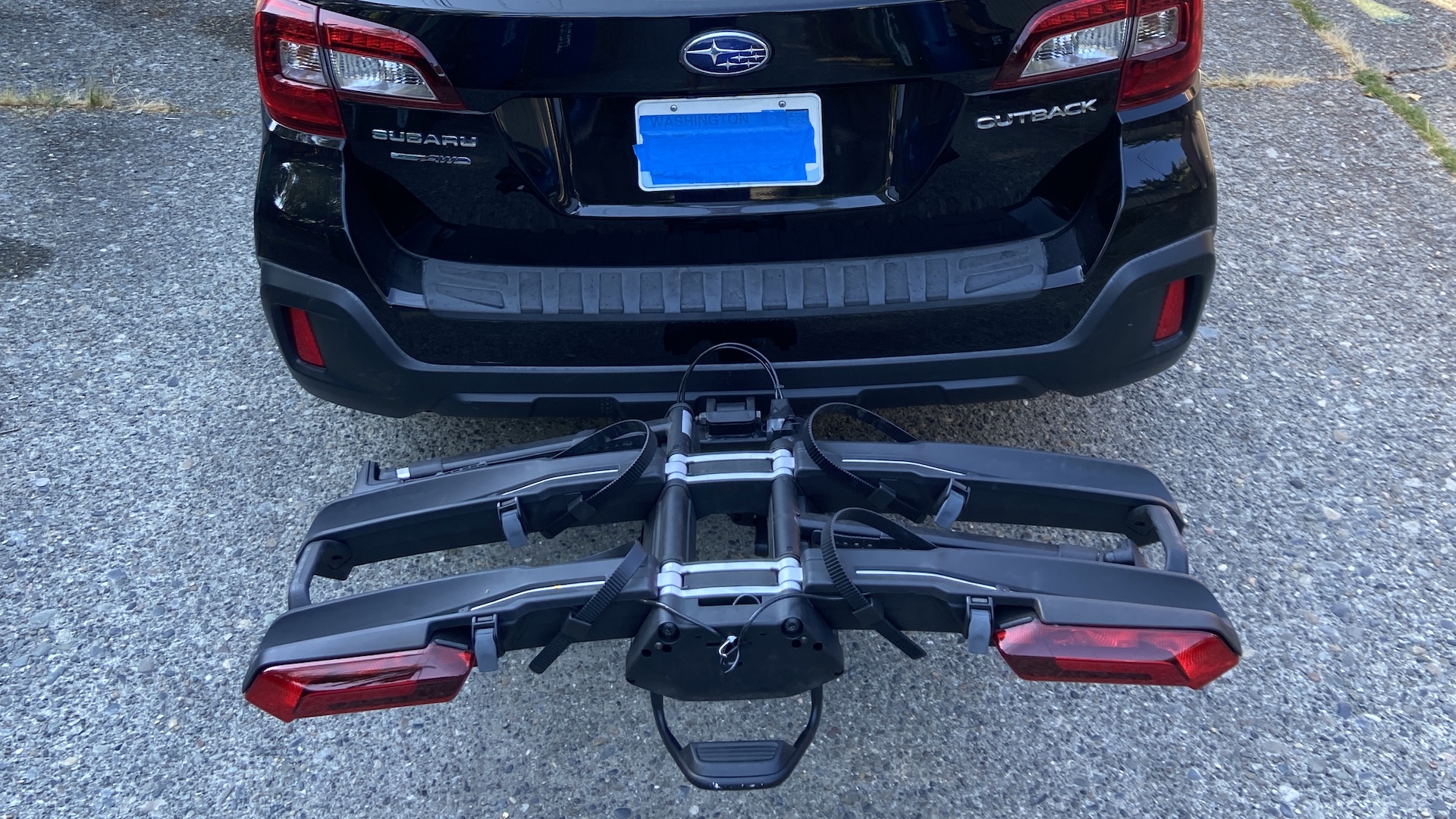
The Thule Epos 2 with Lights bike rack requires zero assembly out of the box: an impressive feat given its complexity. It did take watching the installation video (worth viewing for its soundtrack alone) several times, however, in order to work out how to operate it.
How does it compare to the best bike racks for cars? It is both the most feature-laden bike rack I’ve ever encountered (it has wheels!), and also the most compact in storage mode. Read on to find out more about it's construction and how the bike rack performed in use.
Thule Epos 2: construction
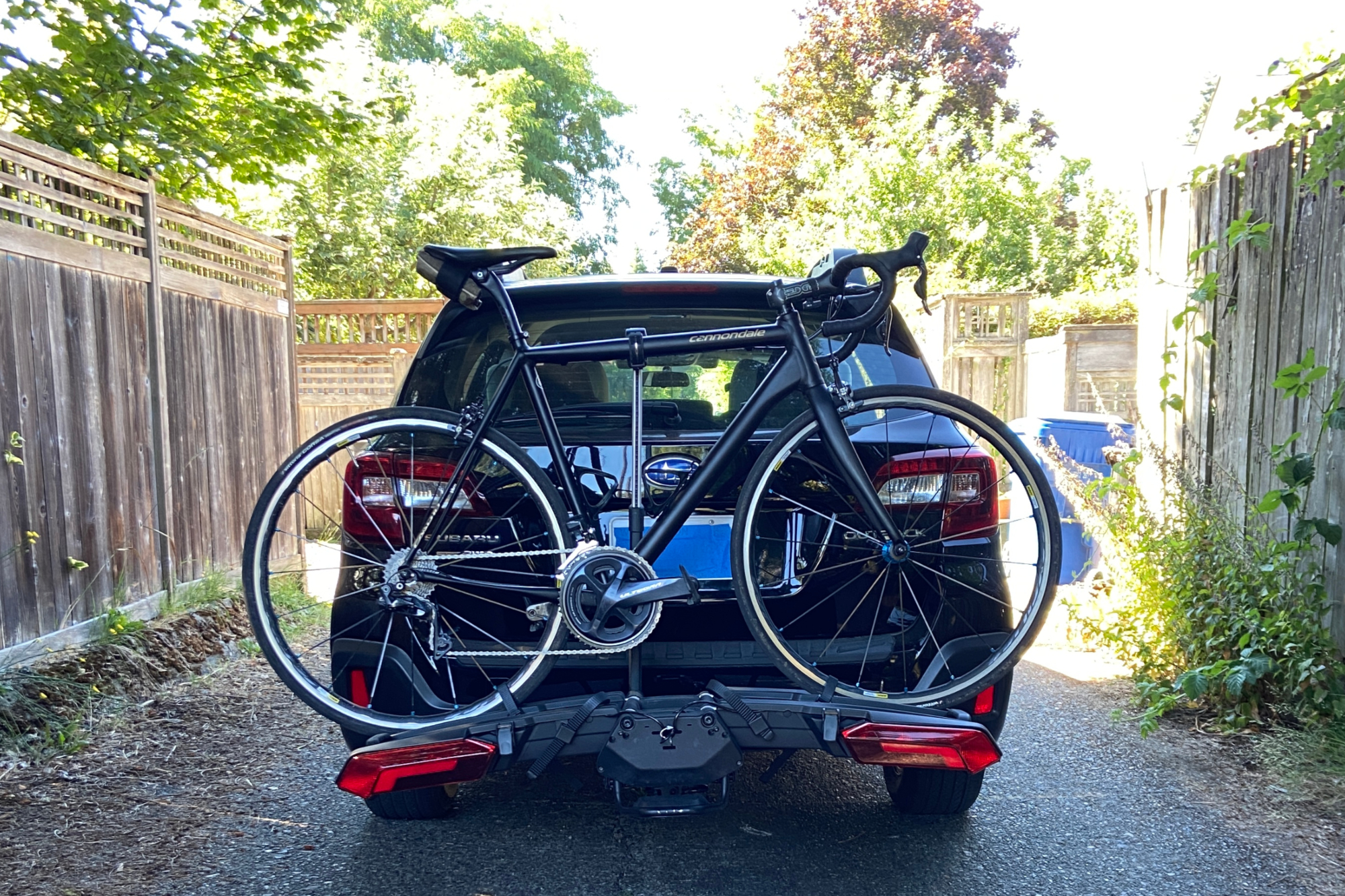
Tightening the rack into the receiver is accomplished via an articulating handle, which does the job, but is a bit awkward as it is located very close to the underside of the rack. The handle then pivots around to lock into the rack and secure it to the vehicle.
The rack utilizes one pivoting arm (it also telescopes) per bicycle with a locking ratchet strap at its end. This can be affixed anywhere on the bike, but works best when attached centrally, and as high up as is possible for maximum leverage. The wheels sit on a tray and are each secured with their own ratcheting strap.
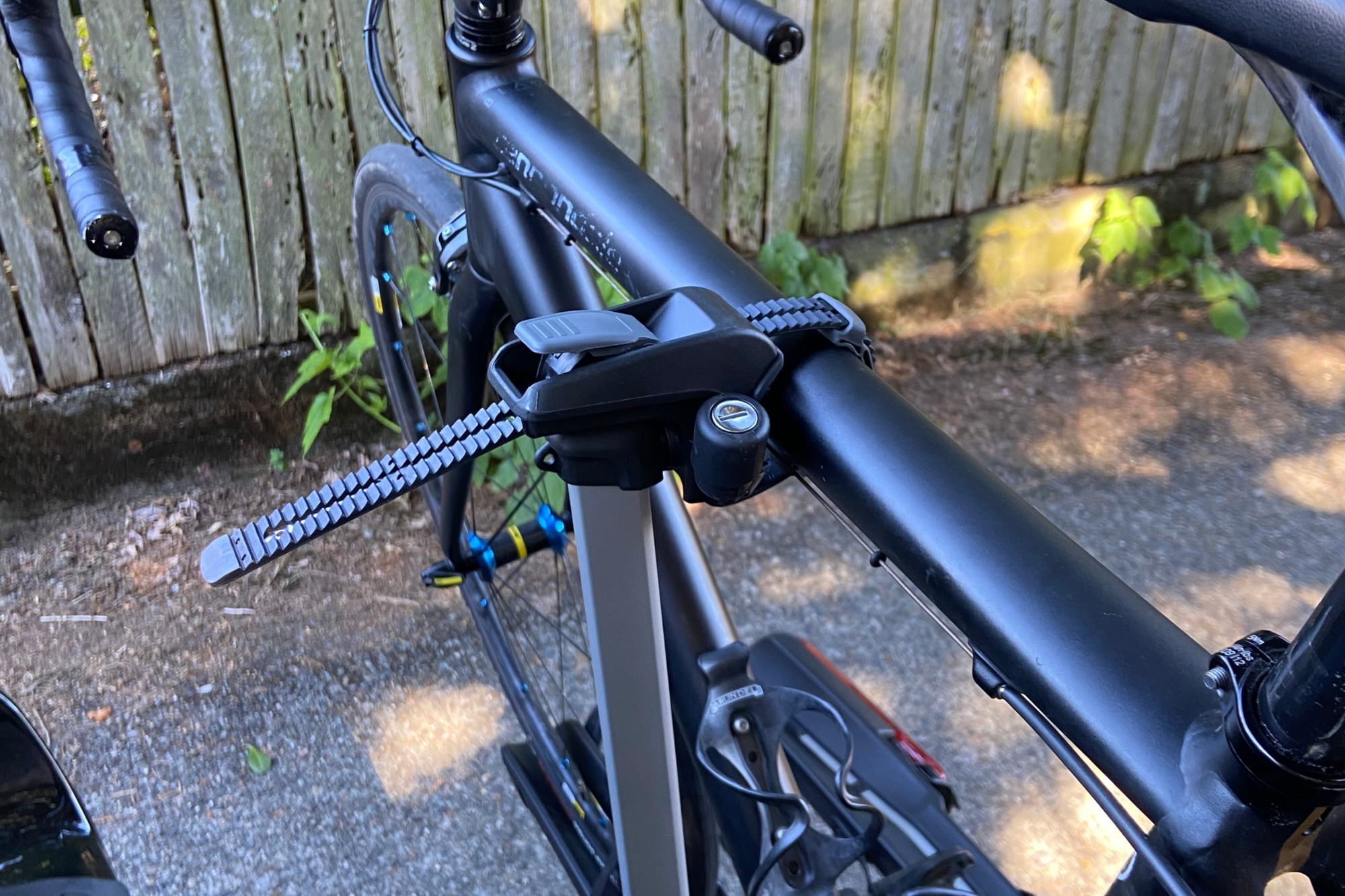
This design works with a wide variety of bike sizes and shapes including those with fenders—which is a rarity for hitch mounted racks. The rack also tips down with bikes installed for trunk access via an easily accessed tilt pedal.
This version of the Thule Epos 2 also is equipped with lights and a license plate holder. The integrated design features brake lights, turn signals and running lights which plug in via a standard auto 4-pin connector on most vehicles with towing capability.
Thule Epos 2: On the road
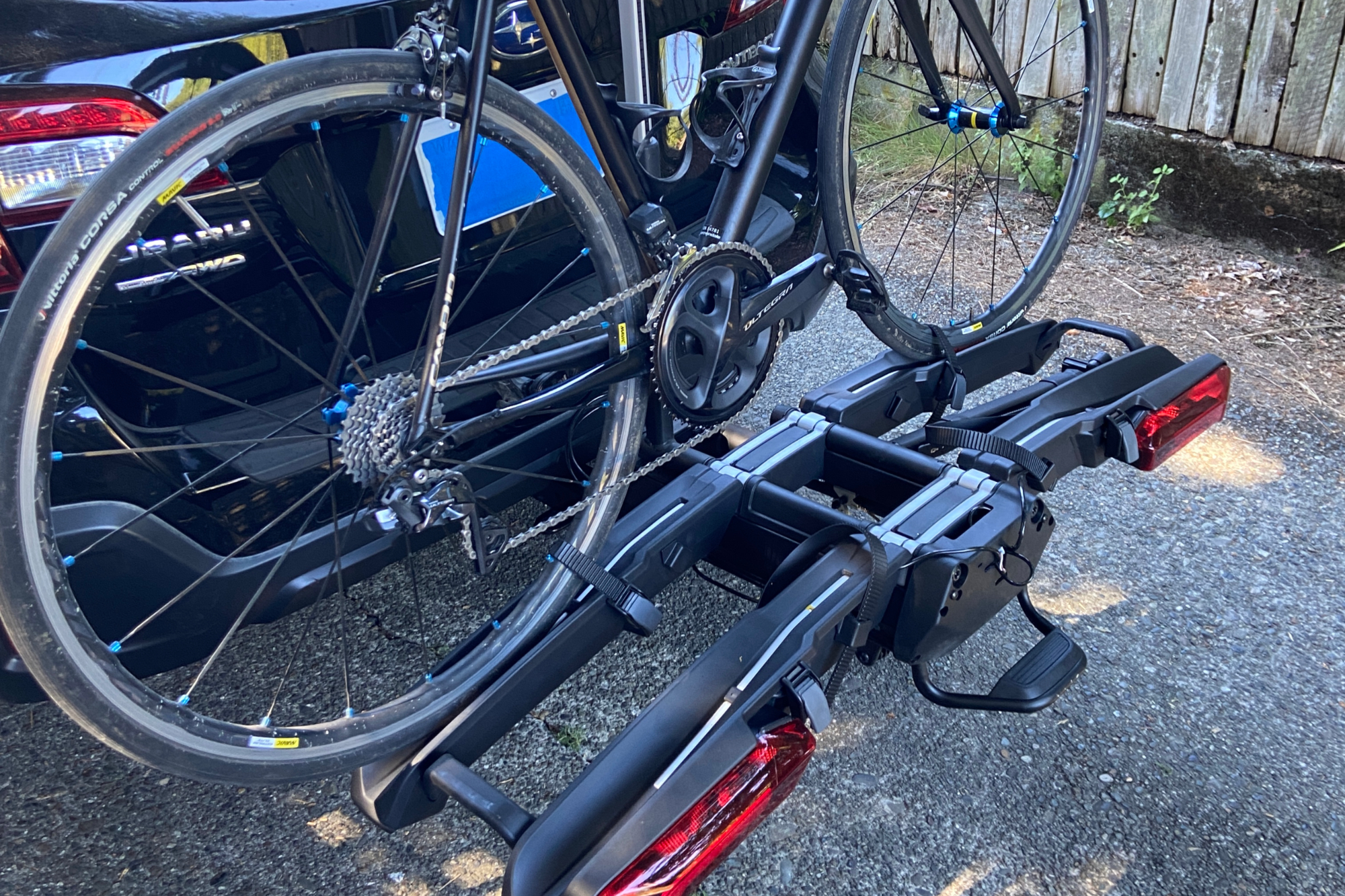
I tested the Thule Epos 2 with a few different bikes and was impressed with how it held all of them. The telescoping arm and strap attachment point can move in multiple directions to best interface with the bicycle frame. It can also reach far enough to grab a wheel, if needed. I found it worked best to loosely attach the arm first, then engage the ratcheting straps on the wheels simultaneously to center the bike on the rack. I then secured the arm, locking it in place if needed. These three points of contact make for an impressively secure connection between bicycle and rack and the design leaves little room for user error.
One small issue with this design, however, is that the rear wheel (when one’s handlebars are to the right, facing the trunk of the car) ratchet strap placement is in very close proximity to the chain. If your chain is at all greasy or you’re in a rush, you’re going to get your hands/wrists/sleeves dirty.
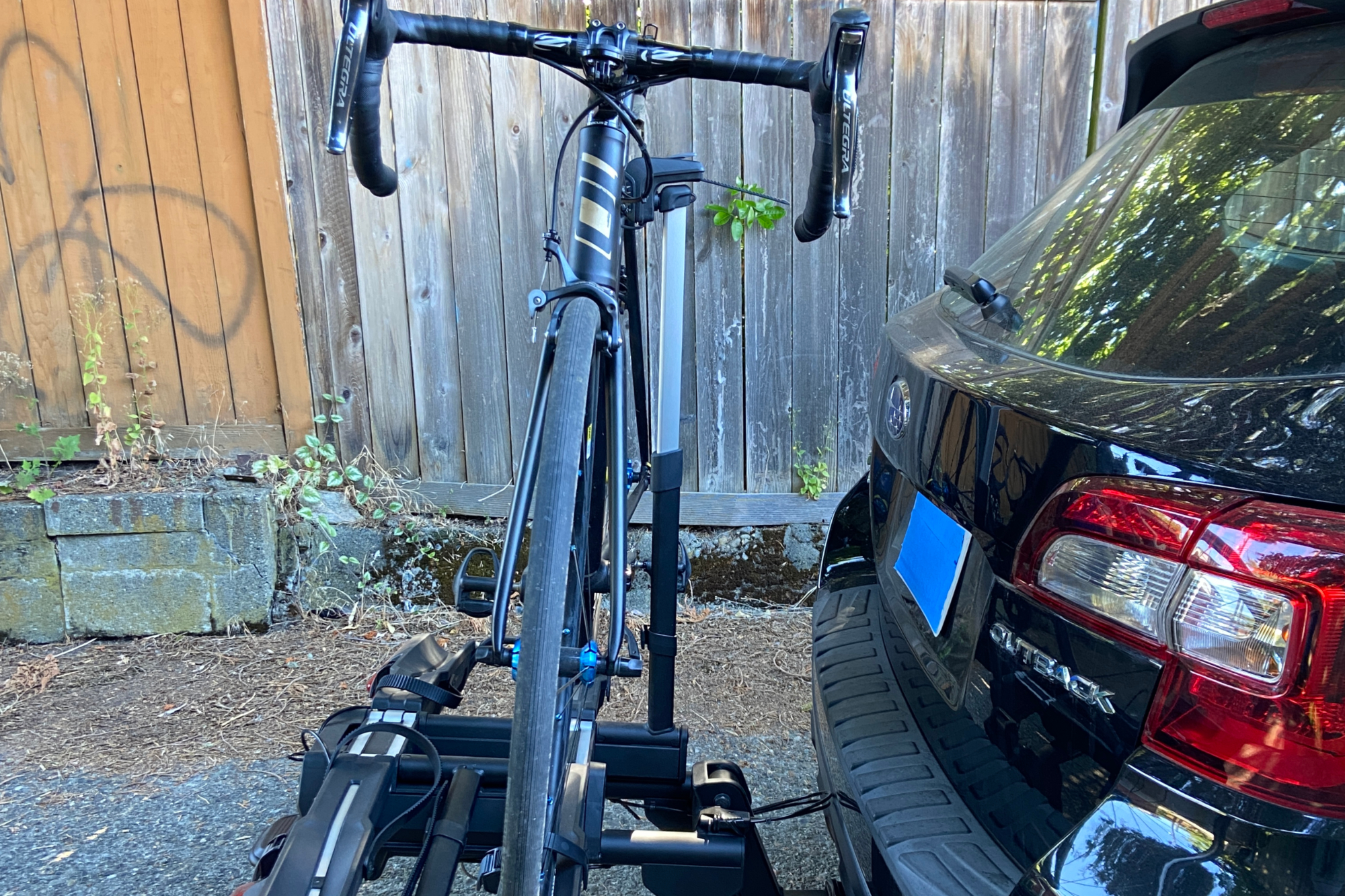
The provided keys work on both the ratchet arms and at the hitch receiver attachment point. I appreciated the integration here and felt secure enough to leave a bike locked on the rack unobserved. This design also means the rack itself cannot be removed from the vehicle without the key.
Strap management is excellent, with dedicated slots for every ratchet strap while not in use (there are six in total). The ratchet mechanisms themselves are also top-notch. They work smoothly and securely and are metal-reinforced for security. They are also very long, which makes them both easy to use and compatible with almost any bicycle.
I don’t have a 4-pin connector on my vehicle, as I don’t use the hitch receiver for anything other than bike racks, so I didn’t try out the lights. It would be nice if there was a spot to store the connector when not in use—I taped it down with electrical tape. Because of the complexity of adding electronics, this feature adds quite a bit to the price ($1249.95 for the Epos 2 as tested vs $999.95 / £999.00 for the standard model). I suppose it can’t hurt, but I also don’t think that lights on a bike rack are necessary for most people.
My test unit also came equipped with a license plate holder. This would be very handy for someone who leaves the rack on the car all the time, but is a pain for people who take it on and off as needed. Fortunately, it is removable.
In use, the rack works very well, but it’s arguably even more impressive off the car. It folds in half, lengthwise, and once removed from the vehicle can be transported on wheels. Fully folded it is comfortably a third the size of a comparable, non-folding rack. Not only is it smaller, it is also considerably easier to move around. If off-vehicle storage space is a concern, this is significant.
I have one major criticism of the function of the Epos 2: it doesn’t fold and lock into place vertically when mounted to a vehicle. This means that it is always in the “down” position, as it would be with bikes loaded on it, which adds, per my measuring tape, roughly 32 inches (80 cm) to the overall vehicle length. As a result, it sticks out of parking spots, makes parallel parking more difficult, and is generally in the way. Though the rack doesn’t interfere with the operation of the rear door, the added length is a problem.
Thule Epos 2: Value and conclusion
For someone who wants lights on their rack, the Thule Epos 2 is one of only a few options. It works very well at securing bicycles and then folding up for storage, but for people who prefer to leave their rack on the car, the fact that it doesn’t fold up against the bumper poses a problem. I was impressed with how well-designed it is, but that should be the case, given the price. At $999.95 / £999.00, the regular version sans lights offers a slightly more palatable option, which I would rate very highly if it could fold out of the way while attached to a vehicle.
Also worth noting: there are lots of accessories available from Thule to customize the rack to your needs, such as a ramp for loading heavy bikes.
Thule Epos 2: Specs
- Cost: $1,249.95 USD
- Weight: 41 lbs
- Number of bikes: 2
- Maximum tire size: Up to 3.2”
- Capacity: 66 lbs per bike
- Receiver size: 1 ¼ or 2”
- Warranty, if applicable: Limited lifetime







